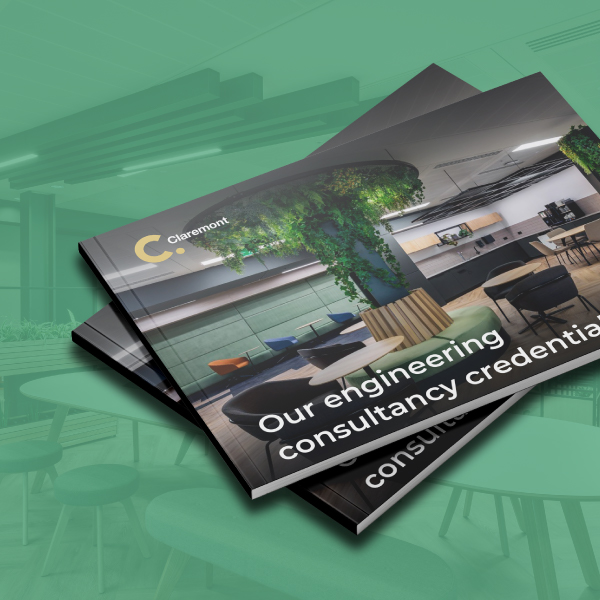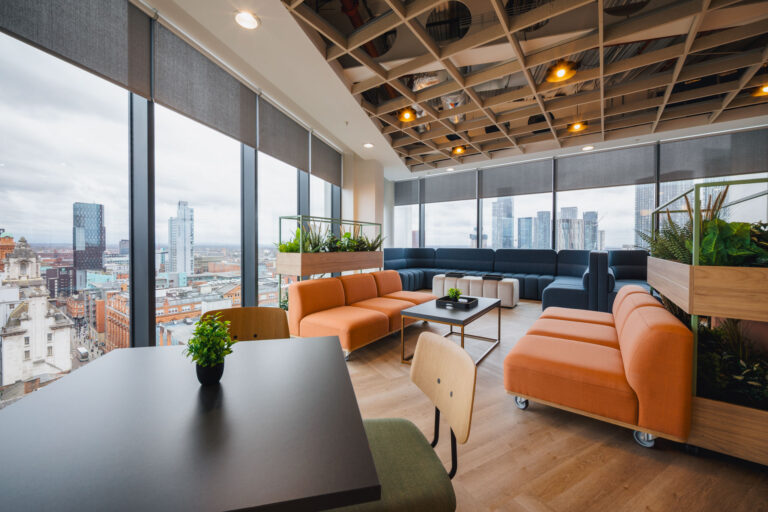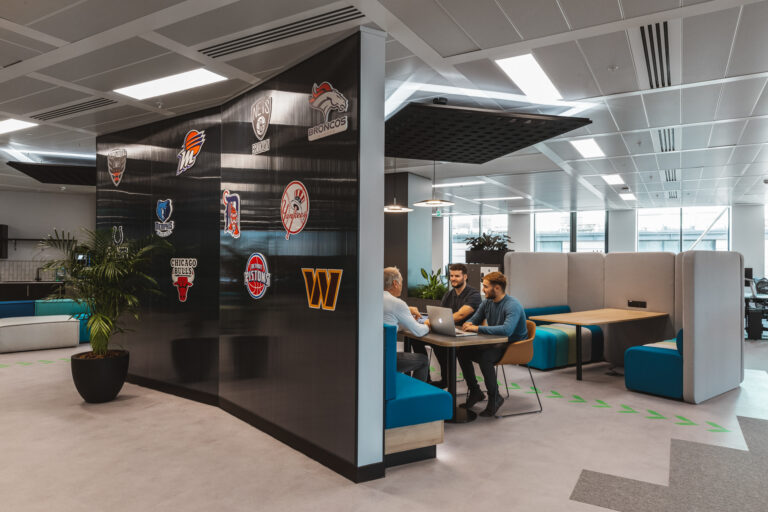
Return to office mandates: What does this mean for the workplace?
Date
22 May 2025
Read length
10 min
Return to office mandates have been dominating the headlines so far in 2025 – and do you know what? We’re really not surprised.
Since 2020, when UK government forced offices to close, the great “Work From Home Experiment” began. Businesses were suddenly upgrading their tech and communications processes to enable remote working at a pace never seen before, opening up a world of possibilities of flexible working practices going forward. Fast-forward to 2025, and these tech and comms enhancements have supported new working models. CIPD reports how the majority of large and SME private organisations and public sector organisations have now returned to 3 days a week in the office, a model that has been relatively stable over the past couple of years. When we look at the data, Pinset Masons reported that 75% of organisations now are mandating at least 3 days a week in person, with those mandating 4 days increasing to 50% this year. The direction of travel towards increasing days in the office is clear, and is overwhelmingly popular with CEOs, with KPMG’s CEO Outlook survey reporting that 83% of CEOs plan a full return to office by 2027. We’ve all seen the headlines announcing how a number of global organisations are already taking steps to lead the return to office movement, perhaps most notably Amazon’s return to office 5 days a week policy in January 2025, leaving a wake of other organisations questioning their own return to office policies behind them.
So why are these stories making such noise in the headlines, how have they been received, and what does this mean for the physical workplace?
How offices have changed
The evolution of The Destination Office
The hybrid working model was borne out of this ‘post-pandemic’ approach to work, where employees divide their working time between in-office and working remotely. Subsequently, the next evolutionary step for workplace design, the Destination Office, was established to not only create a functional space solution but deliver a destination that reflects its unique purpose at the very core.
Redefined office landscape
Many organisations have taken this opportunity to re-evaluate their real estate footprint; typically replacing row after row of desks with a more varied landscape of settings for colleagues to connect, work seamlessly together, and carry out their roles in a safe, comfortable manner, whilst reducing square footage in-line with reduced occupancy. The most successful workplace projects in this new landscape have combined the strategic vision and goals of an organization with the voice of their colleagues, ensuring everybody has been involved along the journey.
Given that an increasing number of organisations are now introducing return to office mandates, is the purpose of the office now shifting back to a default and passive space to work, and with that, is the Destination Office already outdated?
Return to office mandates explained
2025 is shaping up to be the year of return to office mandates, or at least that’s what the headlines appear to be telling us. Return to office mandates are directives from employers requiring employees to work from the office, typically following a period of remote or hybrid working. So far, we’ve seen companies such as JP Morgan, Barclays, Amazon, PwC, WPP and Boots hit the headlines for their return to office mandates, leaving many other organisations questioning whether this is something that they need to adopt.
Amazon’s CEO, Andy Jassy, reasoned that their 5-day office mandate was due to the need to return to their pre-pandemic state when every employee came to the office, highlighting in-person collaboration and strengthened company culture were determining factors in their decision.
JPMorgan Chase’s CEO, Jamie Dimon, highlighted his view that office presence was important for the development of younger talent, and that the company was now re-prioritising what is best for their clients and the organisation.
Whilst the return to office language sounds particularly emotive and harsh, when we look at the policies behind the headlines, they typically offer a fair and balanced approach to return to office, often using the term ‘RTO Mandates’ to refer to any formal policy around hybrid working. For example, Vodafone came into the headlines this March for their return to office mandates, however, their new policy details that colleagues are now required to work from the office just 8 days each month. Even looking at Amazon’s 5-day office mandate, Jassy’s comments were caveated with consideration of individual ‘extenuating circumstances’, demonstrating how the harshness of language used in these headlines are typically followed with a more flexible and human approach.
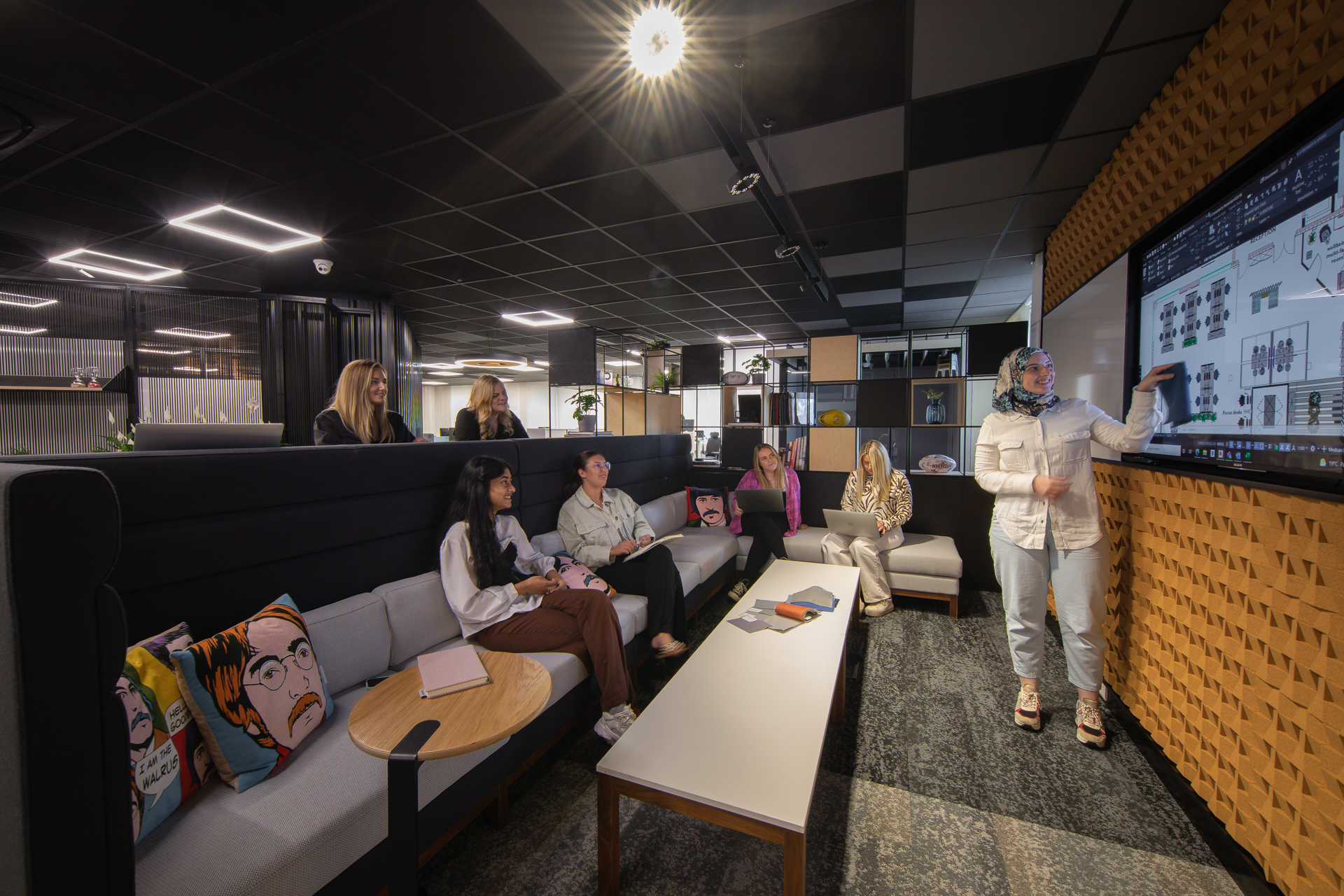
Reception
Success?
Organisations who have communicated their policy changes effectively and transparently, explaining the benefit to both the employee and the business, are most likely to get buy-in from their colleagues – and less likely to hit the headlines in the media! Similarly, organisations who thrive from creativity and collective problem-solving, those who rely on speed of reaction to market changes, and those who thrive in a hierarchical and structured culture are likely to achieve success through increased time together and clear expectations – therefore achieving buy-in from the workforce through a clear communication plan ought to be a successful process.
Resistance
With such a strong push towards return to office mandates from CEOs, it would be reasonable to presume that these mandates were bringing about successful business outcomes, however, Brigid Schulte, Director of the Better Life Lab argues that this push is a result of their personal beliefs, rather than based on concrete data. Research coming out of Stamford University has also found that personal views are driving decision-making, as well as using return to office mandates to divert the blame for poor financial performance, or as a strategic way to reduce headcount without redundancies. It’s not a surprise, therefore, that KPMG International’s Global Head of People highlighted the widening gap between the expectations of CEOs and their employees.
It’s clear that not all employees are happy about these mandates, especially those with 5-day in office directives. According to Gallup, the compliance rate is currently at less than 50%, with high performing employees negotiating more flexibility, and many organisations hemorrhaging talent on the back of the mandates. In fact, a survey conducted by Blind of 2,585 verified Amazon professionals found that 91% of Amazon employees were dissatisfied with the 5-day return to office, with 73% of employees considering looking for a new job, and 32% of people knowing somebody who has quit due to the mandate. It’s not that employees simply don’t want to go into the office at all, according to PwC, 87% of employees still see value in the office as an important place to collaborate and build relationships – it’s the compulsory blanket mandates that are bringing about the resistance.
Beyond the reaction of those directly impacted by return to office mandates, some organisations are publicly doubling down on their support for a more flexible approach. For example, Spotify refuse to break from their “work from anywhere” policy, citing retention and diversification of their workforce as reasons for this. Similarly, Pintrest promote their policy, PinFlex, a flexible model where the type of work people do guides their working location, demonstrating their value in a distributed workforce, whilst bringing teams together for essential touch-points in-person.

Workplace impact
Are workplaces ready for increase occupancy?
As we previously discussed, workplace design has evolved over the past 5 years to embody the Destination Office. This was largely based on reduced occupancy numbers, where we typically have seen a reduction in square footage and desks, and an increase in variety of work settings to accommodate collective teamwork, virtual calls, and socialization. As office occupancy is set to increase with return to office mandates, it’s the business’s responsibility that the office space can accommodate this. From what we’ve seen so far, however, this isn’t an easy process. Amazon was forced to postpone their mandate for some offices due to lack of desk and parking spaces, with some employees being turned away on the first day of the mandates. AT&T experienced the same challenges, with reports of employees becoming territorial about desks, bottlenecks when waiting for lifts, and parking challenges.
If we take the view of the 78% of CEOs and assume that there will be a full return to office in the next few years, it is going to have significant effect on the physical workplace. Claremont’s Workplace Oooh! Research found that 87% of employees expected the office to provide experience, and this hasn’t changed irrespective of mandates. The future workplace will need to offer everything within the Destination Office blueprint… for everyone… all the time. This is why designing flexibility into your real estate strategy, through both workplace design and lease decisions, is so important.
Tailored workspaces to boost employee satisfaction and productivity
Here are some top tips from Claremont’s design team to ensure your workplace supports the evolution of return to office mandates and hybrid working:
1. Align workplace decisions with strategic policy decisions:
Ensure your workplace and FM professionals are around the same table as policy decision-makers in order to create the most strategically-informed workplace design. Although the return to office or hybrid strategy may change over the lifecycle of your workplace fit out, at least workplace can have a greater insight and plan ahead for any proposed strategic decisions.
2. Design for flexibility
It’s clear that we’re on a continuous evolution of hybrid working, and its future seems unclear. Many CEOs are pushing for full-scale returns, whereas many employees are rejecting this mandate, therefore it’s critical to design flexibility with minimal disruption to ensure the workplace will be fit-for-purpose over the lifecycle of the fit-out. To further design-out risk, we recommend planning different occupancy scenarios as options, and ensuring that there is flexibility within the final design to adapt to these scenarios as and when they become reality. With space being a premium, the flexibility of your design extends to functional flexibility, or ‘hackable’ spaces, typically achieved through flexible furniture and data solutions. By designing multi-purpose spaces that can be easily reconfigured throughout the day, you can be assured that every square foot of your space is getting maximum use.
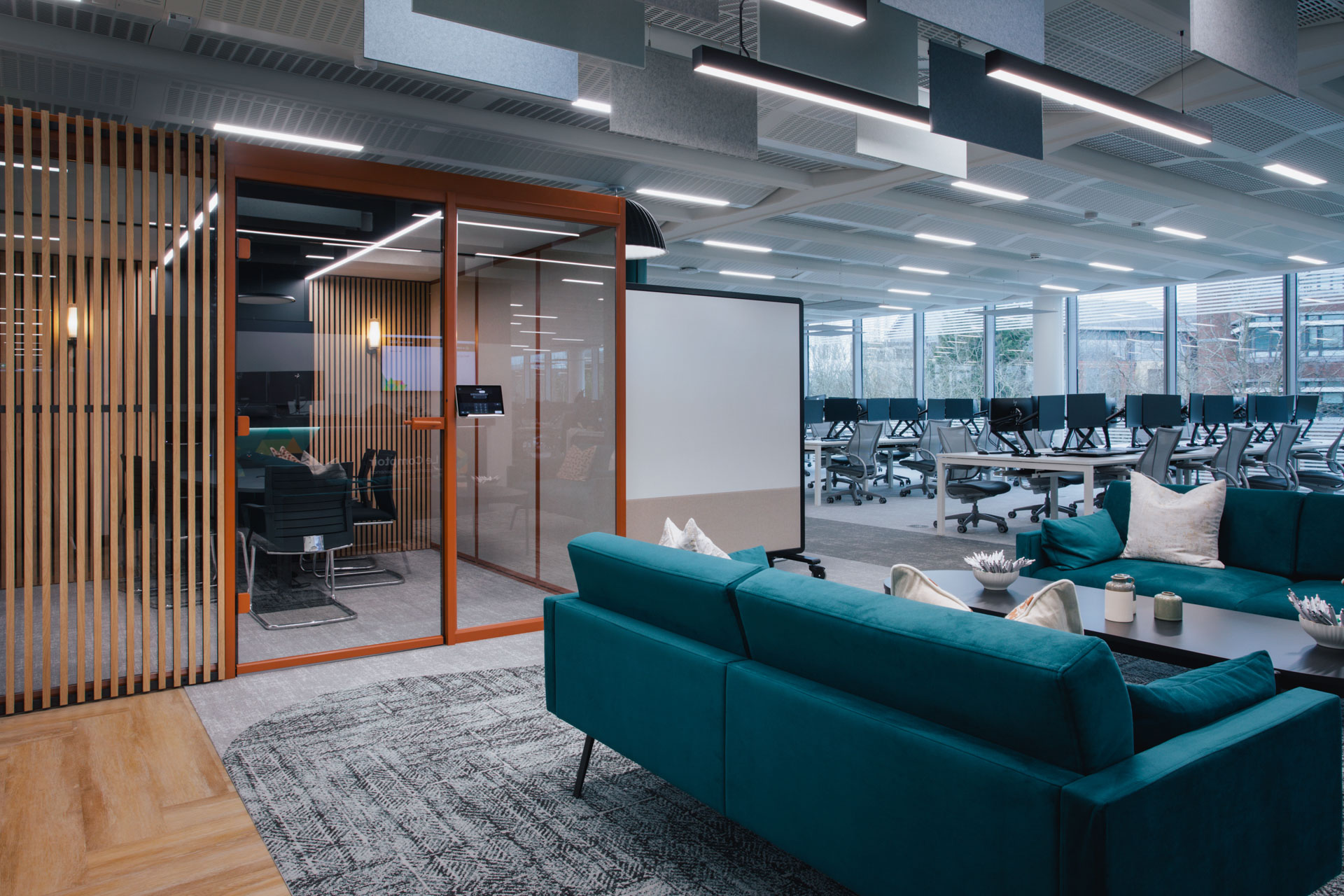
3. Design for all activities
With reduced control over where and when an employee carries out specific work tasks, the office must seamlessly accommodate all of these. Speak with leaders, managers, and colleagues about the types of tasks undertaken by each team as well as the frequency of these, and design spaces to accommodate these in the most efficient way – proximity of these settings to the teams who are most frequently using them are key to ensuring efficiency. Importantly, consider why people may prefer to carry out certain activities and tasks from a remote environment, and incorporate these principles into your workplace design. For example, if an employee may choose to carry out concentrated working from home where they can minimise distractions, it is important to create private, distraction-free spaces in the workplace that reflect this principle.
4. Design for everybody
With the expectation that all colleagues are required to work from the office, the office must, therefore, accommodate everybody’s needs. For example, spaces for neurodiverse, anxious, or even introverted colleagues to retreat is key to ensuring they can perform at their best throughout the day, especially if they are experiencing an overwhelming amount of sensory and social stimulation. Those who pray throughout the day must have a space where they can perform religious rituals with minimal disruption to their day, such as multi-faith rooms with ablution facilities. Those with physical impairments must be able to access and move throughout the office easily, therefore understanding current barriers, and designing these out of the scheme is key.
5. Design for the basics
When designing a workplace that will likely need to flex to future changes in occupation, the importance of getting the basics right cannot be underestimated. Check the maximum number of people that the building can legally and safely support. Check the W/C provision. Check the parking, cycling, and public transport provision. Design power and data solutions that can be easily installed or accessed as the design adapts. Getting the basics right is the first step to designing a truly exceptional user experience, leading to enhanced performance and satisfaction.
What’s next?
It’s clear that there is a strong directive from CEOs to push forward with return to office mandates over the next few years, despite little evidence of their success to-date, and strong negative feedback from employees. It seems that the only real conclusion that we can draw is that the debate will continue, mandates and hybrid policies are going to continue to evolve for the foreseeable future, and the resulting solutions are unlikely to remain stationary.
As such, it is key to ensure your workplace is ready to adapt and flex with changing approaches to return to office or hybrid policies. Flexibility, future planning, and purposeful design principles are key to getting this right, no matter what the future of work is going to look like… and, if you’re going to take away anything from this paper, do not neglect the basics.
See how we could help with your new office interior design or office design and build project here
Get in touch
We love nothing better than talking all things workplace and design – got a question, potential project or just need some guidance?
Drop us a note…



